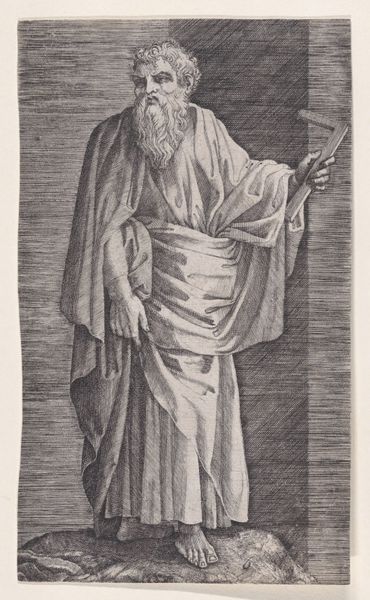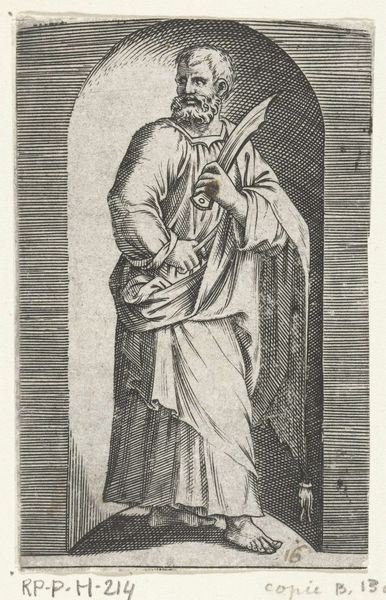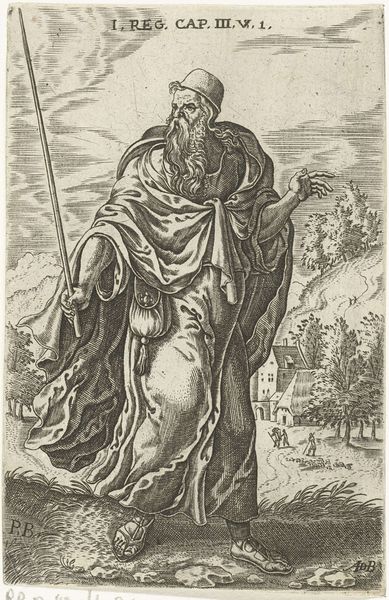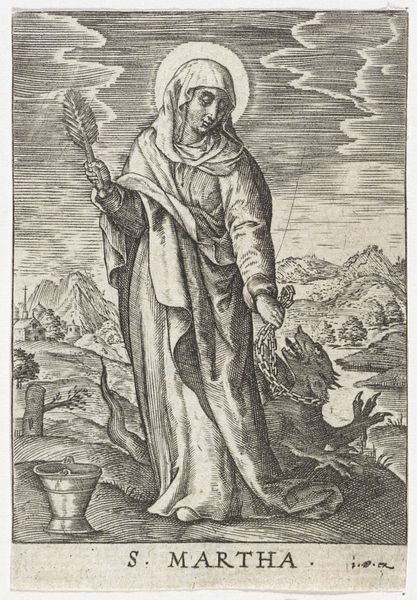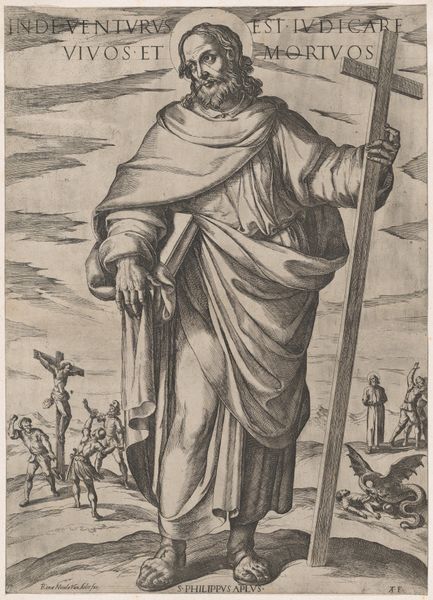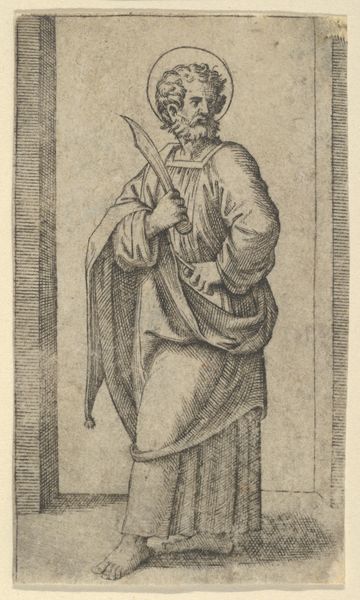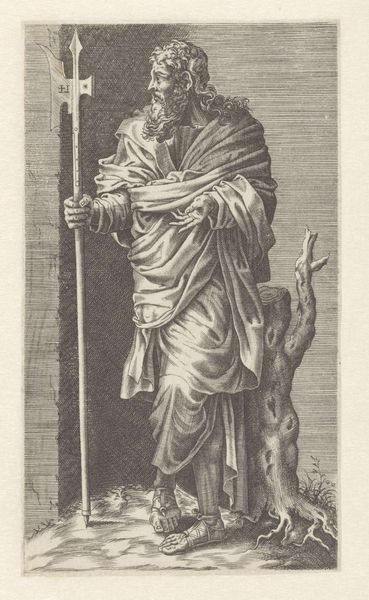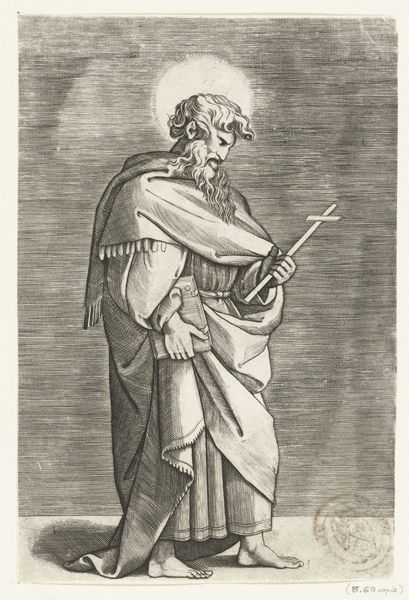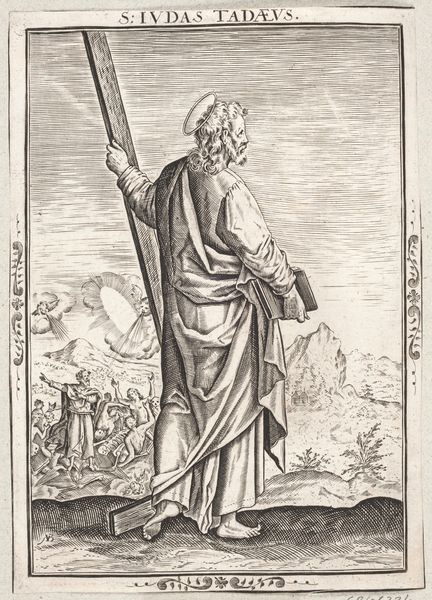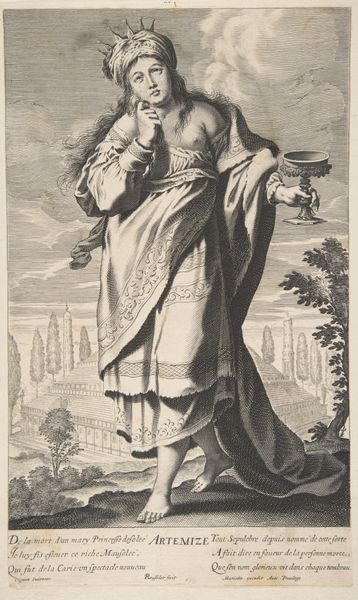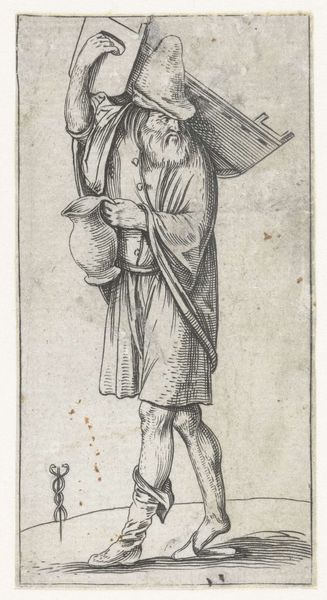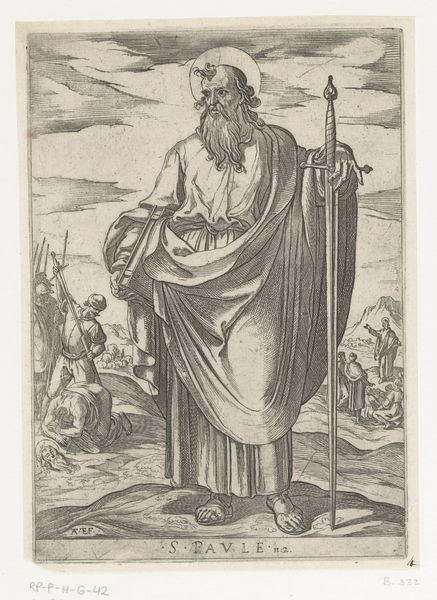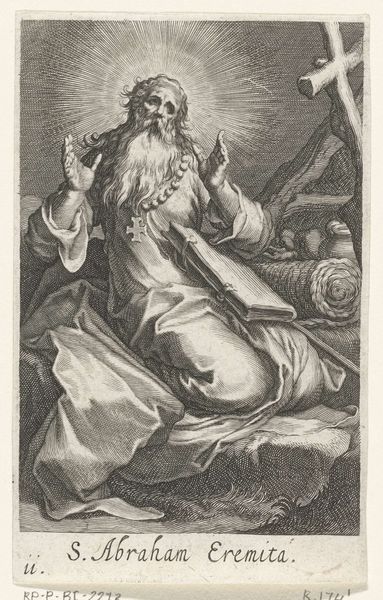
Dimensions: height 116 mm, width 80 mm
Copyright: Rijks Museum: Open Domain
Curator: Standing before us is an engraving titled *Christus*, made before 1585 by the artist Wierix. It currently resides here at the Rijksmuseum. Editor: Wow, immediately I'm struck by this figure's compelling stare—piercing. He emanates such raw power. But, somehow… there’s an almost gentle quality to the way he holds the orb. Curator: Indeed! It's a fascinating study in contrasts. This work, achieved through the exacting process of engraving, demonstrates the mastery of line and form, typical of the period. Look at the rendering of the robes—how meticulously the folds are created. Editor: And the sheer labor of it all! Imagine the hours Wierix must have invested etching these minuscule lines into the metal plate. What sort of tools, what workshop dynamics enabled this intensive form of image production, ultimately aimed at broad, affordable dissemination? Was he mass producing piety? Curator: A curious question, my friend. Consider the social context; such prints facilitated the spread of religious imagery, making it accessible to those who couldn't afford paintings. They essentially democratized art—though, I must say, it does more than piety. To me, it’s imbued with emotion, particularly as it portrays Jesus as triumphant, yet gentle and benevolent, bearing the weight of the world and carrying its people toward salvation. Editor: Hmmm. Salvation… or cultural manipulation? Engravings such as these served to enforce the status quo. I'd wager to suggest that a study on the social history of its viewership may surprise. Who truly benefited from the proliferation of this iconography and its implicit values? Curator: Always challenging convention, are you? Perhaps we're looking at this artwork from very different viewpoints but finding value in both. What I take away is, it has invited new perspectives that reveal how complex, powerful images can speak across the ages. Editor: And my sentiment is that in studying its method, its touch, one must recognize and deconstruct the social factors embedded in a seemingly innocent, artistic offering of the age. A critical, and necessary point, I should think.
Comments
No comments
Be the first to comment and join the conversation on the ultimate creative platform.
